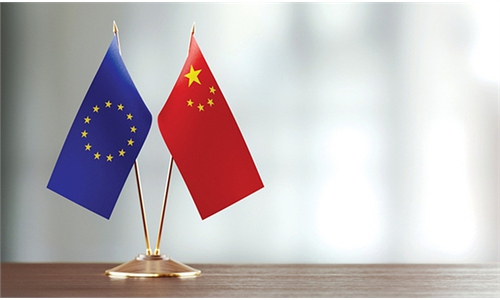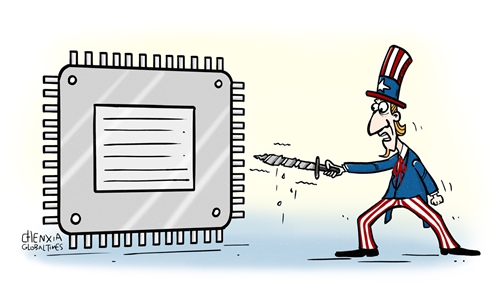
Illustration: Xia Qing/GT
As China navigates the complexities of international trade and technological competition, its focus on expanding legacy chip production is not merely a response to US sanctions but a strategic move to build a resilient domestic supply chain.Recently, it has been reported that several Chinese semiconductor-related companies have initiated the listing process or expressed interest in going public.
The China Securities Regulatory Commission has accepted the IPO documents and listing guidance for AkroStar, a Shanghai-based semiconductor technology provider, according to media reports.
In late March, semiconductor companies Wintech Nano Co and Sidea Semiconductor Equipment Co completed IPOs and are now listed on the A-share market.
The latest development reflects market optimism over the Chinese semiconductor industry's breakthroughs and confidence in its ability to build competitive advantages despite years of US-led containment.
Over the past years, the US has escalated its suppression of China's manufacturing industry, particularly the semiconductor sector, through measures such as Entity List sanctions and export controls on advanced manufacturing equipment. However, this external pressure has not deterred the Chinese semiconductor industry. Instead, the industry has beefed up its innovation capabilities and demonstrated remarkable resilience, leveraging traditional chip manufacturing as a strategic breakthrough point.
Although China faces restrictions and obstacles in the advanced chip sector, its development of legacy chips has emerged as a significant bright spot. According to data released by the General Administration of Customs, in 2024, China exported 298.1 billion integrated circuits (ICs), commonly known as chips, a year-on-year increase of 11.6 percent. China also produced 451.4 billion ICs, setting a record high.
Several factors have driven the production surge.
First, policy guidance and strategic planning have played a crucial role. In recent years, the Chinese government has issued policy documents, clarifying the importance and development goals of the semiconductor industry. The top-level design of these policies provides a clear roadmap and strategic guidance for the industry's development. Additionally, various authorities have encouraged companies to increase research and development (R&D) investment and promote technological innovation and industrialization through financial subsidies, tax incentives and special funds.
Second, technological breakthroughs provide a core driving force for the industry's growth. In recent years, China has made great progress in semiconductor technology, from chip design to manufacturing processes, equipment R&D and material innovation. Chinese companies' independent innovation capabilities have continuously improved.
Third, a vast market and diverse application scenarios offer ample space for the development of China's semiconductor industry. As the world's largest consumer market for electronic products, China exhibits a substantial demand for semiconductor chips. This demand is further amplified by the rapid advancement of emerging technologies, including the digital economy, artificial intelligence, 5G communication and the Internet of Things, all of which contribute to fostering the domestic semiconductor industry.
Legacy chips, once dismissed as "backward," are now emerging as linchpins in China's efforts to establish a local industrial chain. While these chips utilize mature manufacturing processes, there remains significant potential for innovation in design and packaging. Also, the size of the market plays a crucial role in driving technological advancement, as traditional chips account for approximately 70 percent of global chip consumption and are integral to core industries such as vehicles, consumer electronics and industrial control.
Through focused development in the realm of traditional chips, Chinese firms have not only gained valuable technological expertise but have also gradually constructed a comprehensive industrial chain encompassing design, manufacturing and beyond.
Increasing China's production of traditional chips serves not only as a response to US sanctions but also as a crucial step toward establishing a robust local industrial chain. By enhancing its capabilities in ICs' manufacturing, China is gradually transforming its production capacity into a solid industrial foundation. This foundational strength is essential for the country to develop the necessary competencies to eventually break the blockade on advanced chips.



